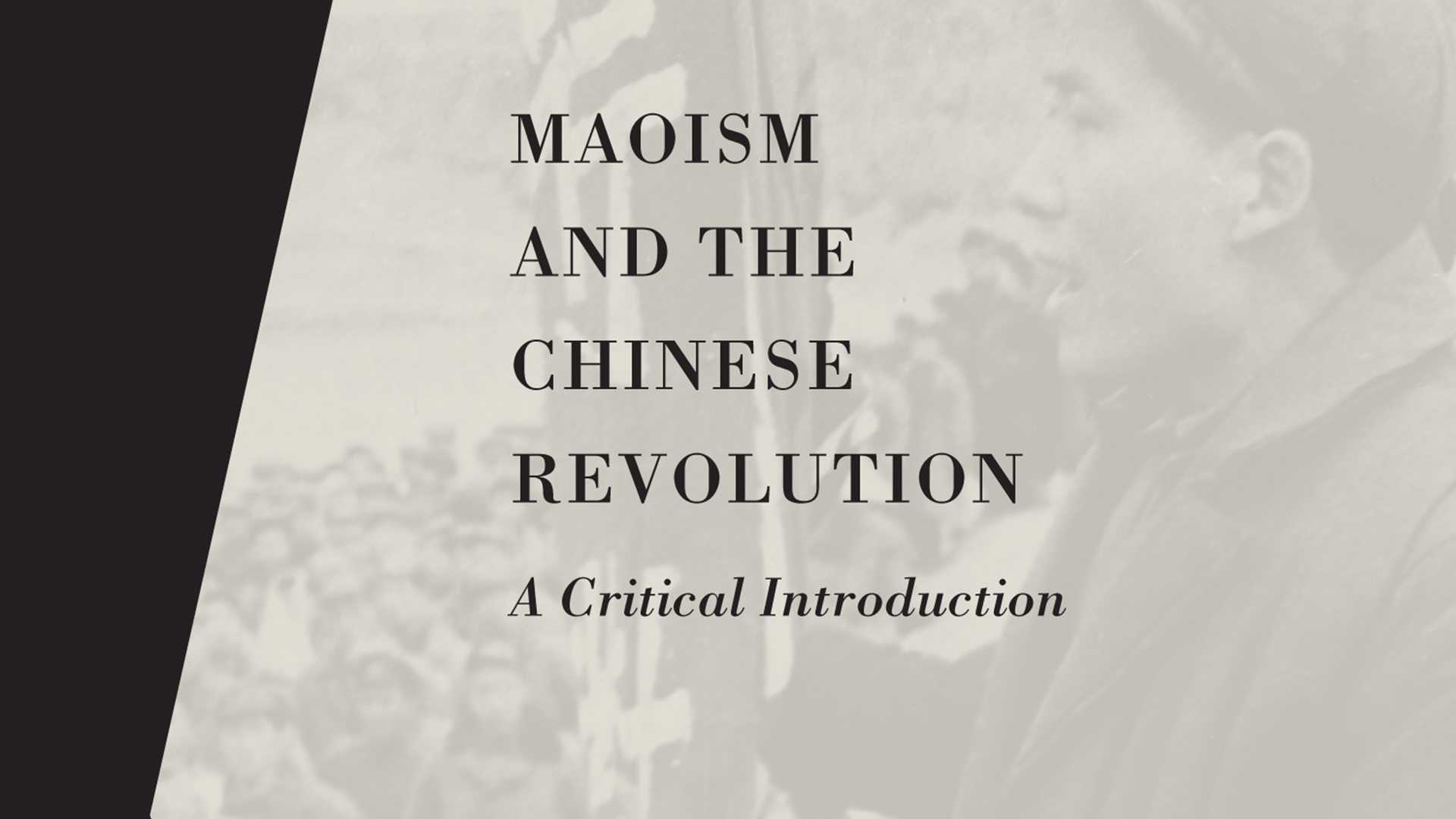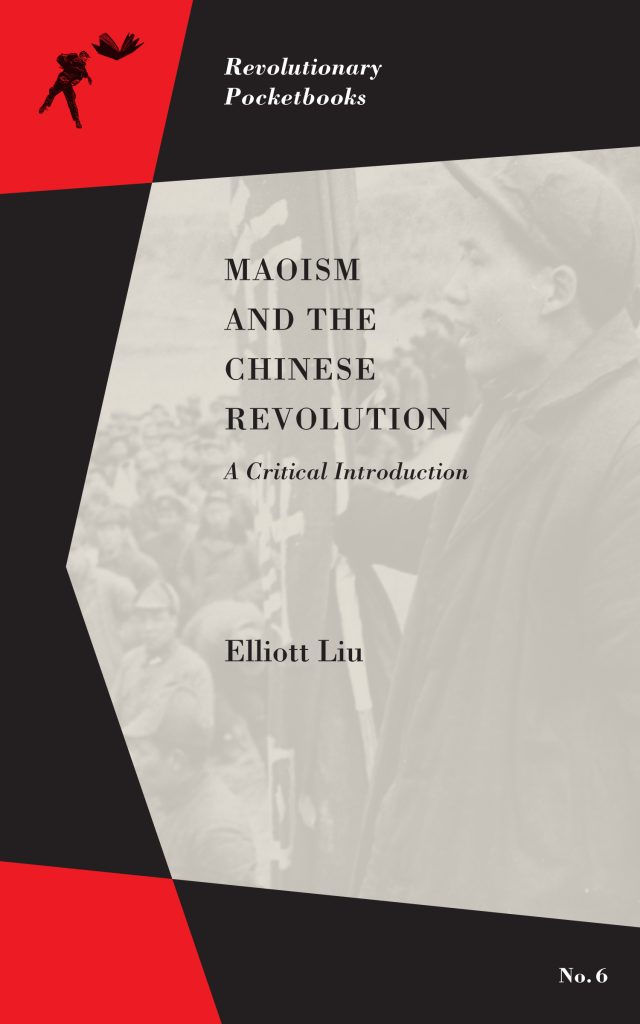Notes toward an International Libertarian Eco-Socialism
July 25th, 2016
Elliott Liu, Maoism and the Chinese Revolution: A Critical Introduction (PM Press, 2016).
This work, the sixth volume in PM Press’ “Revolutionary Pocketbooks” series, provides a compelling review of the philosophy and historical practices of Maoism before, during, and after the Chinese Revolution of 1949. Liu, an organizer with Take Back the Bronx in New York, shows Maoism to be essentially totalitarian—an “internal critique of Stalinism that fails to break with Stalinism.” In parallel to Loren Goldner’s argument in “Notes toward a Critique of Maoism” (2012), Liu accuses Mao Zedong and the Chinese Communist Party (CCP) of imposing state-capitalism onto the Chinese masses and, indeed, of preparing the way for the liberalizing reforms instituted by Deng Xiaoping after Mao’s death—this, precisely by means of the CCP’s repeated suppression of the revolutionary self-organization of peasants and workers, in keeping with the Lenino-Stalinist tradition. Though Liu focuses more on developments within China than international relations, any investigation of Mao’s foreign policies—supporting the Soviet suppression of the Hungarian Revolution, opening negotiations with Nixon, being among the first countries to recognize Pinochet’s coup in Chile, backing UNITA over the MPLA in Angola—shows the clear error of holding Maoism to be a liberatory philosophy. In this text, Liu analyzes the Chinese Revolution using a libertarian-communist or anarchist perspective.
The origins of Maoism as an insurrectional-peasant ideology owe much to the power of the Stalinist Communist International (Comintern), which, in an effort to protect the Soviet Union by destabilizing imperialism, disastrously ordered the Chinese Communists to ally with the Kuomintang (KMT), led by Chiang Kai-Shek. Upon taking power with the CCP’s aid in 1927, Chiang murderously suppressed the Shanghai and Canton workers’ communes, leading Mao to undertake the Long March to Yanan and a reorientation toward the Chinese peasantry as a potential mass-base.
Although the CCP vastly expanded its presence in rural China by mandating land reforms that largely deposed the landlord class, in turn swelling the ranks of the Red Army, Mao’s cadres in certain cases protected the property of gentry who supported the war against the occupying Japanese power, or who were allied to the KMT, as during the case of the United Front strategy again mandated by Moscow to oppose Japan. In playing this conservative role, the CCP foreshadowed the moment it would replace the bourgeois-feudalist ruling class by capturing the State in the Chinese Revolution (1949). Even at this point, the height of victory, Liu notes that the CCP was unwilling to countenance mass-land seizures by peasants or proletarian self-management in the cities.
Instead, Mao largely followed the Stalinist model of nationalization and expansion of heavy industry and collectivization of agriculture, as outlined and directed by the Party in Five-Year Plans designed in the interests of securing “primitive socialist [i.e., state-capitalist] accumulation,” as previously theorized by the Soviet economist Yevgeni Preobrazhensky. In response to the widening class inequalities induced by such developments, Mao in 1956 called for “a hundred flowers to bloom” and manifest popular discontent—or “criticism”—but when “ultra-left” critiques surfaced and mass-strikes broke out in Shanghai, he dismissed such “deviations,” associating them with the “deceived” Hungarian revolutionaries put down by the USSR. The prominent student leader Lin Hsiling expressly identified the CCP as a bureaucracy ruling over the working classes without democracy, and she gained a following for this reason. In response, Mao commenced the “Anti-Rightist Campaign” to purge such critical-intellectual elements together with more conservative forces. Then, the Great Leap Forward (1956-1958), which was launched principally for the purpose of the accumulation of capital, burgeoned China’s industrial and agricultural output as the State extracted evermore from the peasants, tens of millions of whom succumbed to famine conditions.[1] As Liu writes, the hyper-exploitation of the country’s laboring classes implemented by Mao and the CCP caused not only state-capital but also corpses to accumulate. Hence, it is little surprise that, in assessing the revelations made by Nikita Khrushchev about Stalinist atrocities at the Twentieth Soviet Congress (1956) that would ultimately lead to the Sino-Soviet Split, Mao declared Stalin to have been “30 percent wrong and 70 percent right.”
Initiated by Mao to putatively oust bureaucratic rivals and stave off the threat of “capitalist restoration,” the Chinese Cultural Revolution (1966-1976) brought about a similar dynamic to that induced by the Hundred Flowers Campaign, whereby the CCP summoned revolt from below, only to crush it once it came to threaten Party domination. Whereas the Red Guards called up to defend the Revolution engaged in varying critique of their “black” opponents—the progeny of the deposed feudal-bourgeois class—and CCP cadres proper, workers in Shanghai were inspired to dismiss the local Party leadership and found a “People’s Commune” altogether, leading to the January Revolution of 1967 that spread to several provinces. Though the Commune was defeated through the efforts of Mao and his loyalists, Liu identifies that these developments yielded a distinct “ultra-left” tendency advocating for proletarian organization outside the CCP, “a revolutionary split in the army, and a new revolution in China.” According to Liu, the most prominent crystallization of the ultra-left in the Cultural Revolution found expression in Shengwulian, or the Hunan Provisional Proletarian Revolutionary Great Alliance Committee, whose member Yang Xiguang wrote the highly influential Whither China?, advocating the establishment of a “People’s Commune of China” and recommending that the working classes organize autonomously against the “‘Red’ capitalist class.” Nevertheless, the CCP redeployed the forces of repression to break up Shengwulian in 1968 and thereafter utilized the State to maintain the domination of labor domestically and support enemies of the Soviet Union—UNITA in Angola, Pinochet in Chile—internationally, all the while moving to normalize relations with the US. Lastly, prior to Mao’s death in 1976, the Shanghai Textbook was published, containing a summary of the Communist leader’s views on the supposed transition to socialism—though in reality, as Liu observes, the text is more concerned with the “proper management of state capitalism.”
In essence, then, we see the arc of the CCP’s developments in history over time, from active collaboration with the bourgeois-nationalists of the KMT to the subsequent replacement of feudalist-capitalist relations of production with state-capitalist ones. While Mao and the CCP may have sought to avoid some of the excesses of Stalinism by introducing more participatory elements such as the mass-line, criticism, and self-criticism into the world of politics, in truth they worked systemically to coopt and repress any possibility of a more radical revolution that would institute self-management and autonomy among the Chinese workers and peasantry—in yet another parallel to the Bolsheviks, against whom arose the Third Revolution championed by insurrectional peasants and workers, from the Kronstadt Commune and the Makhnovshchina to other devastating rural rebellions, as developed in the Tambov region in response to famine caused by the Red State’s grain-requisition schemes. As Liu summarizes: “Mao subjectively aimed to prevent capitalist restoration [during the Cultural Revolution] but objectively strengthened its hold, preventing the emergence of any force capable of challenging it.” It is not an exaggeration, then, to assert that, just as Khrushchev continued to propagate Stalinist politics after having denounced his predecessor in the “Secret Speech,” Deng Xiaoping’s capitalist reforms do not constitute a total contradiction to Mao’s established approach, either.
Philosophically, Maoism does not go far beyond Stalinist reductionism, as it cannot. On Liu’s account, Mao’s conception of dialectics rationalizes Party substitutionism in place of autonomous proletarian struggle, and claims that the class politics of a given State should be analyzed with reference to the ideology of its leadership, not the actual class makeup of said leadership. It is due to such facile reasoning that Mao’s CCP could so readily judge Khrushchev’s regime as “bourgeois,” as against Stalin’s supposed revolutionism previously. With the progression of the Chinese Revolution, the CCP came to increasingly slander—much like the Bolsheviks—all oppositional forces as reactionary-bourgeois, even and especially if movements like Shengwulian and the Shanghai Commune were far more revolutionary than it was. As Liu notes, the labels “revolutionary” and “reactionary” in Maoist China were usually decided with reference to one’s relationship to the Party, rather than to the actual nature of one’s politics. Finally, one could likely say that Maoist gender politics are preferable to feudalist-capitalist ones, but these cannot easily be separated from the overall imperatives of Maoist state-capitalism—such that autonomist feminism holds greater promise for collective liberation.
In light of these considerations, Liu’s conclusion is quite right: “[f]or revolutionaries who aim at a free anarchist and communist society, Maoism as a whole must be rejected.” As an alternative to Maoism and all other strains of authoritarian socialism which irremediably substitute Party and State in the place of radical proletarian self-activity, today’s revolutionaries should struggle for “forms of mass, federated, armed and directly democratic social organization” at the regional and global levels, working to “maintain and expand rebel territories that allow for revolutionary activity” as much as possible.
[1] See Yang Jisheng, Tombstone: The Great Chinese Famine, 1958-1962 (New York: Farrar, Straus and Giroux, 2012).







